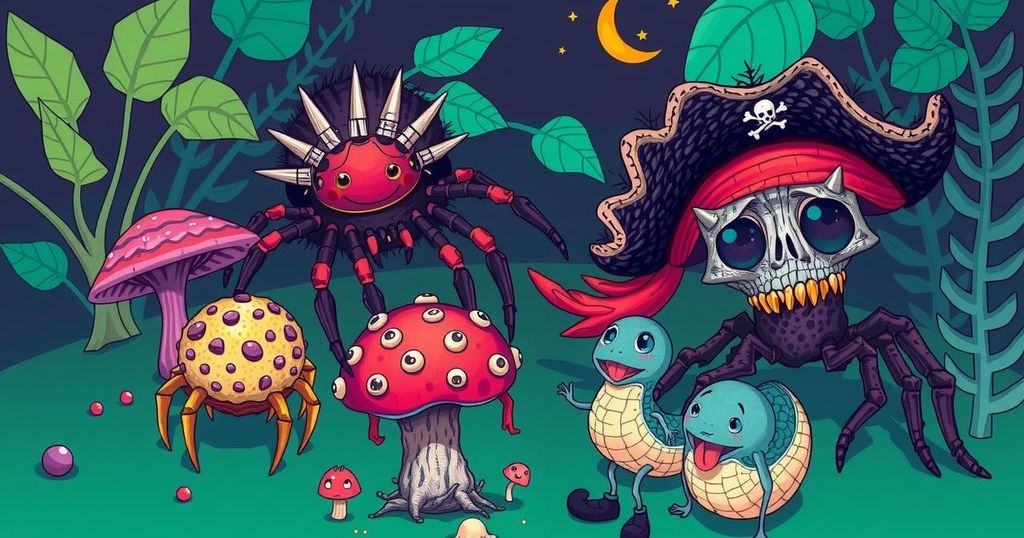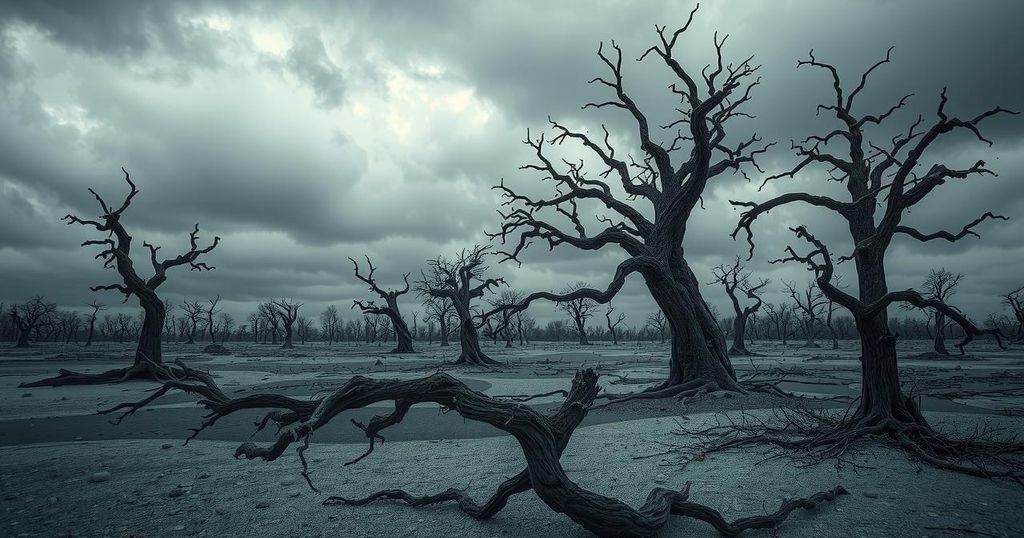Climate change
AFRICA, CALIFORNIA, CALIFORNIA ACADEMY OF SCIENCES, CLIMATE CHANGE, COSTA RICA, EUROPE, FOSSIL DISCOVERY, FOSSILS, LONDON, NATIONAL OCEANIC AND ATMOSPHERIC ADMINISTRATION, NATIONAL OCEANIC AND ATMOSPHERIC ADMINISTRATION FISHERIES, NORTH AMERICA, PALEONTOLOGY, SCHMIDT OCEAN INSTITUTE, SOUTH AFRICA, UK, UNITED KINGDOM, UNITED STATES, WILDLIFE, WILDLIFE CONSERVATION
Jamal Walker
0 Comments
Strangest New Species of 2024: Vampire Hedgehogs and Pirate Spiders
In 2024, scientists discovered numerous unusual species including vampire hedgehogs, pirate spiders, and fishy fungi. Despite the ongoing biodiversity crisis, research efforts have unveiled thousands of new life forms across the globe. Some highlights include a new species of hedgehog from Vietnam, ghost palms in Borneo, and discoveries in deep-sea environments off New Zealand.
In 2024, scientists have been remarkably busy, discovering thousands of new species that highlight the weird and wonderful diversity of life on our planet. From the depths of the Pacific to the mountain ranges of Vietnam, an exciting array of plants, animals, and fungi have been documented. This surge in discovery comes at a time when global biodiversity is under serious threat due to human activities, leading to extinction rates 100 to 1,000 times the natural pace.
Among the most significant findings was the work of the California Academy of Sciences, which identified 138 new species, including a pygmy pipehorse and an endangered edible dahlia. Similarly, scientists at the Natural History Museum in London cataloged 190 species, including three dinosaurs and a piranha. All told, biologists added a staggering variety to the already established 2.2 million known species of flora and fauna.
One of the most unusual discoveries comes from the Royal Botanic Gardens in Kew, UK. Researchers classified three unusual fungi species, notable for a fishy odor. Found within the 800 existing toadstool species of the Russula genus, these microscopic fungi emit a pungent smell, reminiscent of shrimp when handled. Noteworthy examples include Russula lapponica studied in Scandinavia and Russula neopascua in the Rockies.
In Vietnam, a new species of hedgehog has caught scientists’ attention due to its peculiar characteristics. Dubbed the Hylomys macarong or “vampire hedgehog,” it lacks the spines typical of hedgehogs and sports long, fang-like teeth, possibly serving a role in sexual selection. The species was first photographed in 2009 but remained unnoticed in museum collections until genetic research unveiled its uniqueness.
Further exploration has unveiled a ghostly climbing palm, identified as Plectocomiopsis hantu, in Borneo. Its eerie appearance, with white undersides and grey stems, led to its name, which reflects its spectral look. Such research is crucial for conservation efforts in Malaysia and Indonesia’s protected rainforests.
Meanwhile, deep-sea explorations off the coast of New Zealand’s South Island have unveiled over 100 new species, including molluscs and a puzzling new coral variant. Known as the Bounty Trough, this underwater landscape yielded discoveries over a 38-day expedition and raises questions about biodiversity beneath the ocean.
In addition to marine finds, a new species of newt named Tylototriton koliaensis was found in Vietnam, showcasing bony ridges along its back. Though small, these creatures are at risk due to illegal wildlife trade, joining the ranks of threatened amphibians.
Additionally, researchers have identified two new species of spiders on the remote island of St Helena, humorously dubbed the pirate spiders, which notably invade and kill their fellow arachnids’ webs.
On a historical note, a fossil skull named after the famous Kermit the frog, the Kermitops gratus, was recently identified, striking a resemblance more to salamanders than frogs. It adds an interesting twist to the fossil record, shedding light on ancient ecosystems.
Despite the excitement surrounding these discoveries, experts remain concerned. Martin Cheek, a senior leader at Kew, warns of the drastic impacts of human activity on newly found species. He stated, “We increasingly see new species on the edge of extinction, often due to habitat destruction by humans.”
As we move towards 2025, the urgency of global conservation efforts becomes more pronounced, emphasizing the need to protect these newly discovered species before they vanish. A call for greater participation in conservation initiatives is essential, as these findings are a stark reminder of the fragility of our planet’s biodiversity.
This year’s exploration and discoveries have shed light on an astonishing variety of new species, highlighting both the wonders of biodiversity and the threats it faces. While scientists celebrated the addition of bizarre creatures such as vampire hedgehogs and pirate spiders, the continuing biodiversity crisis calls for urgent attention. As new species are cataloged, it is vital to focus on conservation efforts to ensure their survival for future generations.
Original Source: www.bbc.com




Post Comment